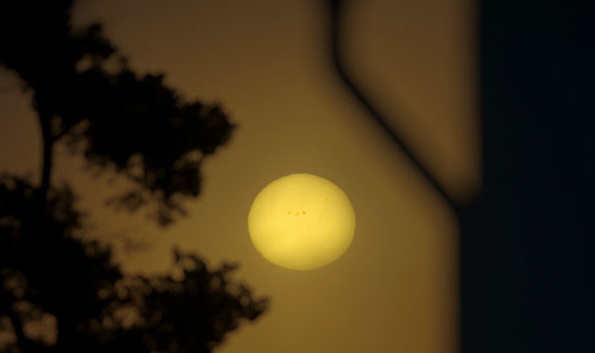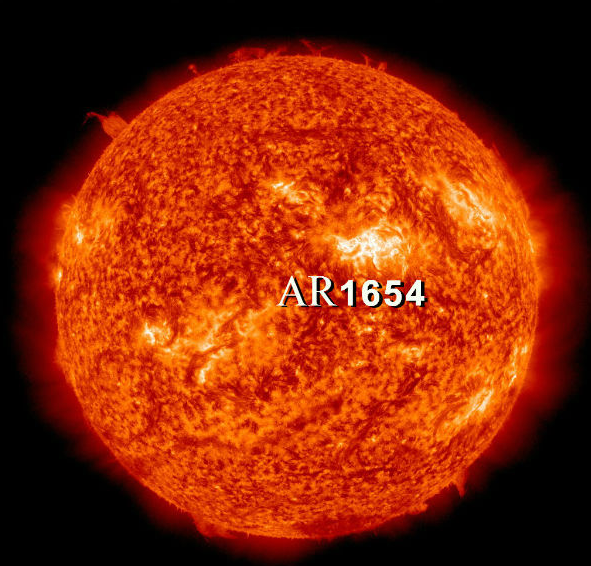Sunspots are dark areas on the solar surface, contain strong magnetic fields that are constantly shifting. A moderate-sized sunspot is about as large as the Earth. Sunspots form and dissipate over periods of days or weeks. They occur when strong magnetic fields emerge through the solar surface and allow the area to cool slightly, from a background value of 6000 ° C down to about 4200 ° C; this area appears as a dark spot in contrast with the very bright photosphere of the Sun. The rotation of these sunspots can be seen on the solar surface; they take about 27 days to make a complete rotation as seen from Earth.
Sunspots remain more or less in place on the Sun. Near the solar equator the surface rotates at a faster rate than near the solar poles. Groups of sunspots, especially those with complex magnetic field configurations, are often the sites of solar flares. Over the last 300 years, the average number of sunspots has regularly waxed and waned in an 11-year (on average) solar or sunspot cycle.
Check out this link to see the YouTube movie of NASA SDO tracking of Sunspot AR1654

Sunspot 1654 captured at sunrise over Frösön, Sweden by astrophotographer Göran Strand on January 14, 2013 (Credit: Göran Strand/SpaceWeather)

